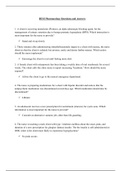Resume
Samenvatting Artikels PAK (verdiepend en basis)
- Établissement
- Universiteit Gent (UGent)
artikels van psychologische arbeidskenmerken, zowel basisartikels als verdiepende artikels (verdiepend: abstract en uitleg van prof in de les)
[Montrer plus]












